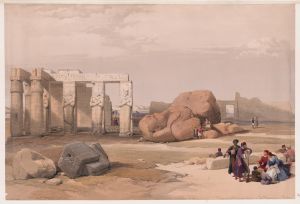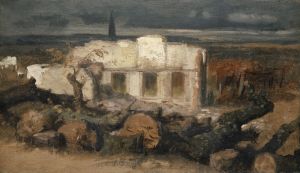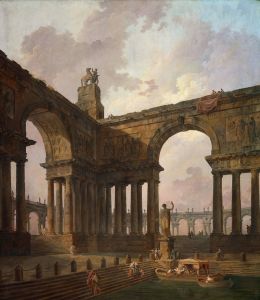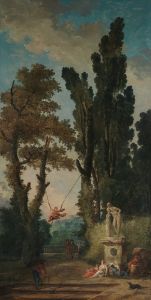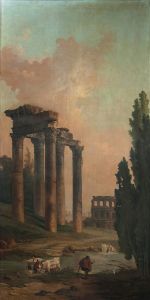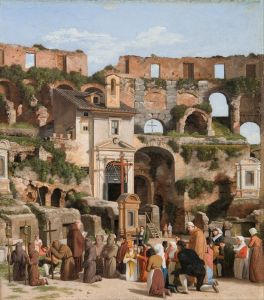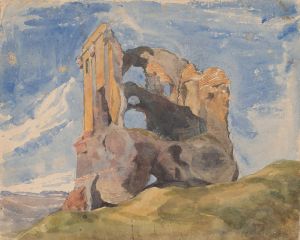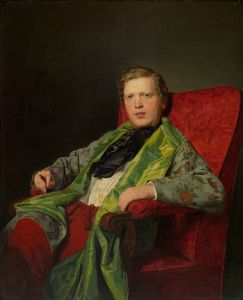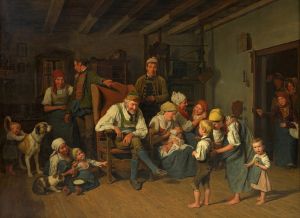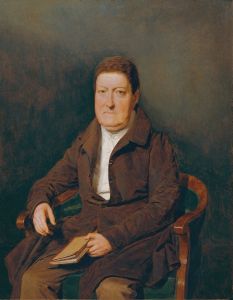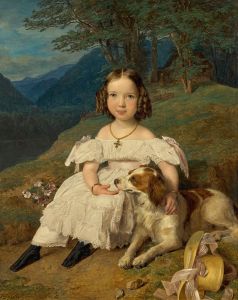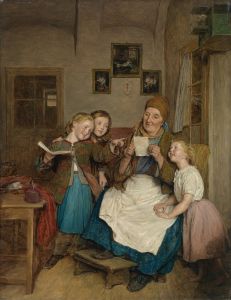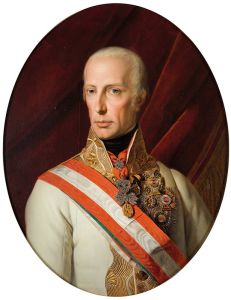
Die Ruine Liechtenstein bei Mödling
A hand-painted replica of Ferdinand Georg Waldmüller’s masterpiece Die Ruine Liechtenstein bei Mödling, meticulously crafted by professional artists to capture the true essence of the original. Each piece is created with museum-quality canvas and rare mineral pigments, carefully painted by experienced artists with delicate brushstrokes and rich, layered colors to perfectly recreate the texture of the original artwork. Unlike machine-printed reproductions, this hand-painted version brings the painting to life, infused with the artist’s emotions and skill in every stroke. Whether for personal collection or home decoration, it instantly elevates the artistic atmosphere of any space.
Ferdinand Georg Waldmüller (1793–1865) was an Austrian painter and one of the most prominent figures of the Biedermeier period. Known for his detailed and realistic depictions of landscapes, portraits, and genre scenes, Waldmüller played a significant role in 19th-century Austrian art. Among his works is the painting Die Ruine Liechtenstein bei Mödling (The Ruins of Liechtenstein near Mödling), which showcases his mastery of landscape painting.
This artwork depicts the ruins of Liechtenstein Castle, located near the town of Mödling in Lower Austria. The castle, originally built in the 12th century, holds historical significance as the ancestral seat of the House of Liechtenstein, one of Europe's oldest noble families. By the time Waldmüller painted the scene, the castle was already in a state of ruin, having been abandoned and partially destroyed over the centuries. The painting captures the romantic allure of the decayed structure, a theme that resonated with the Romantic sensibilities of the 19th century.
Waldmüller’s rendering of the ruins is characterized by his attention to detail and his ability to capture the interplay of light and shadow. The painting reflects his deep observation of nature and his skill in portraying the Austrian landscape. The surrounding environment, likely including trees, rocks, and the natural terrain, complements the central focus on the ruins, emphasizing the harmony between human history and the natural world.
The exact date of the painting is not definitively documented, but it is consistent with Waldmüller’s broader body of work during the mid-19th century, when he frequently painted landscapes and scenes from the Austrian countryside. His works from this period often reflect a blend of realism and romanticism, showcasing his technical precision and emotional engagement with his subjects.
Die Ruine Liechtenstein bei Mödling is an example of Waldmüller’s ability to elevate a seemingly ordinary subject into a work of art that invites contemplation. The painting not only serves as a visual record of the ruins but also reflects the cultural and artistic trends of the time, particularly the fascination with nature, history, and the passage of time.
Today, Waldmüller is celebrated as one of Austria’s most important painters, and his works are held in high regard for their artistic and historical value. While specific details about the current location or ownership of Die Ruine Liechtenstein bei Mödling are not readily available, Waldmüller’s paintings can be found in major museums and collections, including the Belvedere in Vienna and other institutions dedicated to 19th-century European art.





